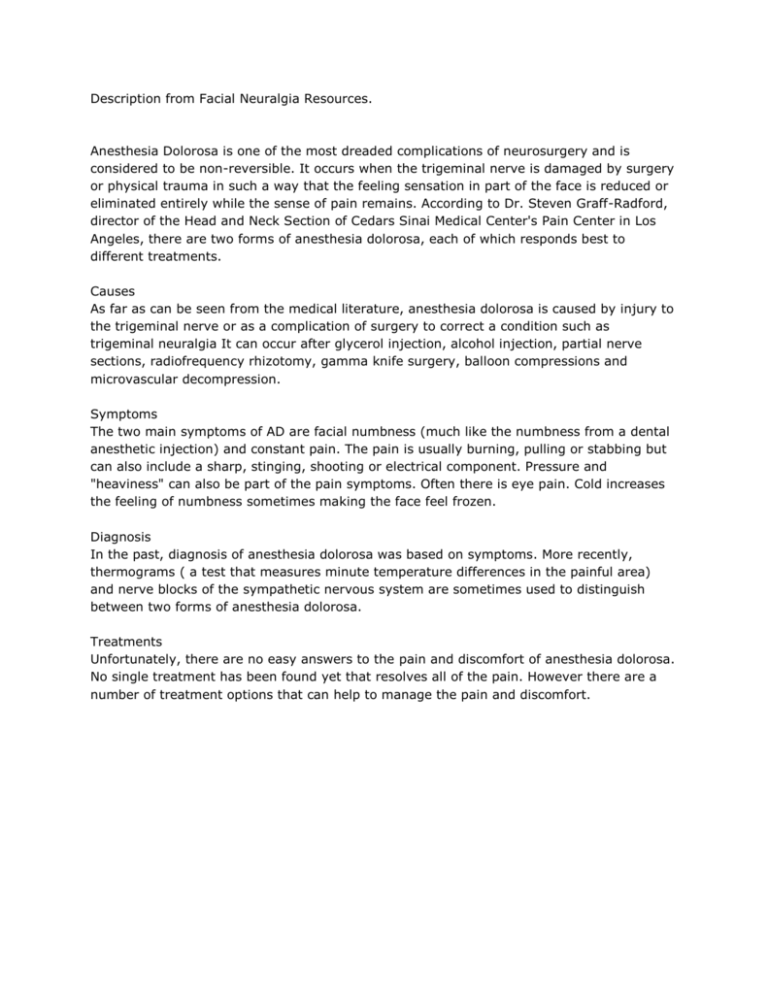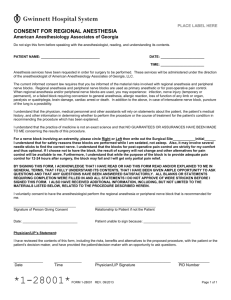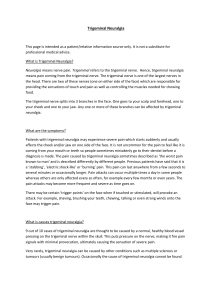Description from Facial Neuralgia Resources
advertisement

Description from Facial Neuralgia Resources. Anesthesia Dolorosa is one of the most dreaded complications of neurosurgery and is considered to be non-reversible. It occurs when the trigeminal nerve is damaged by surgery or physical trauma in such a way that the feeling sensation in part of the face is reduced or eliminated entirely while the sense of pain remains. According to Dr. Steven Graff-Radford, director of the Head and Neck Section of Cedars Sinai Medical Center's Pain Center in Los Angeles, there are two forms of anesthesia dolorosa, each of which responds best to different treatments. Causes As far as can be seen from the medical literature, anesthesia dolorosa is caused by injury to the trigeminal nerve or as a complication of surgery to correct a condition such as trigeminal neuralgia It can occur after glycerol injection, alcohol injection, partial nerve sections, radiofrequency rhizotomy, gamma knife surgery, balloon compressions and microvascular decompression. Symptoms The two main symptoms of AD are facial numbness (much like the numbness from a dental anesthetic injection) and constant pain. The pain is usually burning, pulling or stabbing but can also include a sharp, stinging, shooting or electrical component. Pressure and "heaviness" can also be part of the pain symptoms. Often there is eye pain. Cold increases the feeling of numbness sometimes making the face feel frozen. Diagnosis In the past, diagnosis of anesthesia dolorosa was based on symptoms. More recently, thermograms ( a test that measures minute temperature differences in the painful area) and nerve blocks of the sympathetic nervous system are sometimes used to distinguish between two forms of anesthesia dolorosa. Treatments Unfortunately, there are no easy answers to the pain and discomfort of anesthesia dolorosa. No single treatment has been found yet that resolves all of the pain. However there are a number of treatment options that can help to manage the pain and discomfort.









